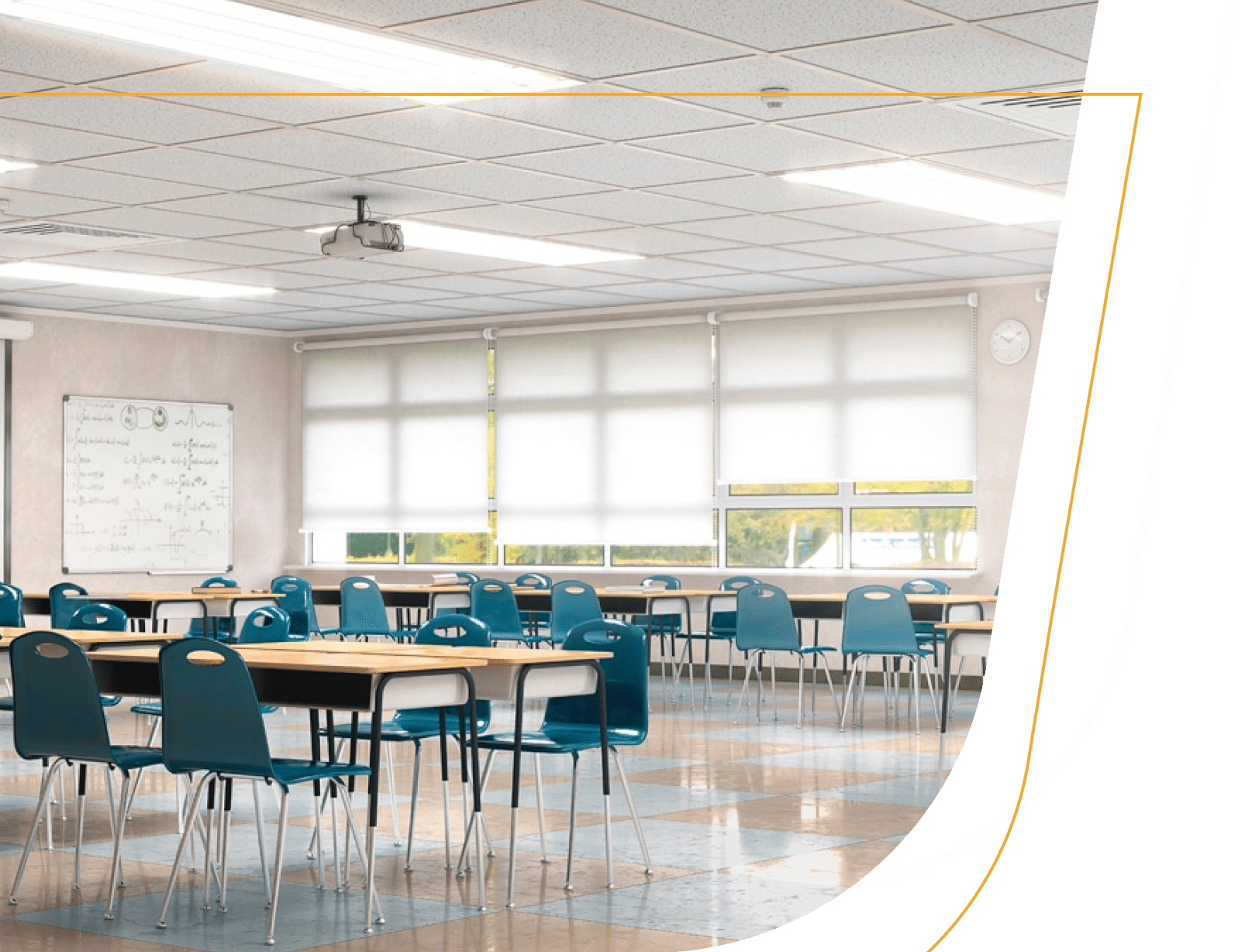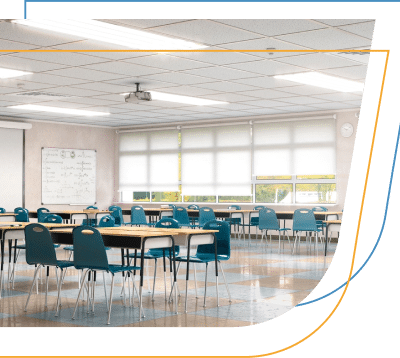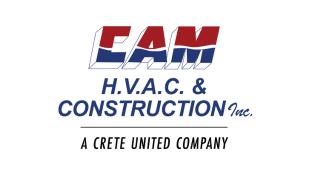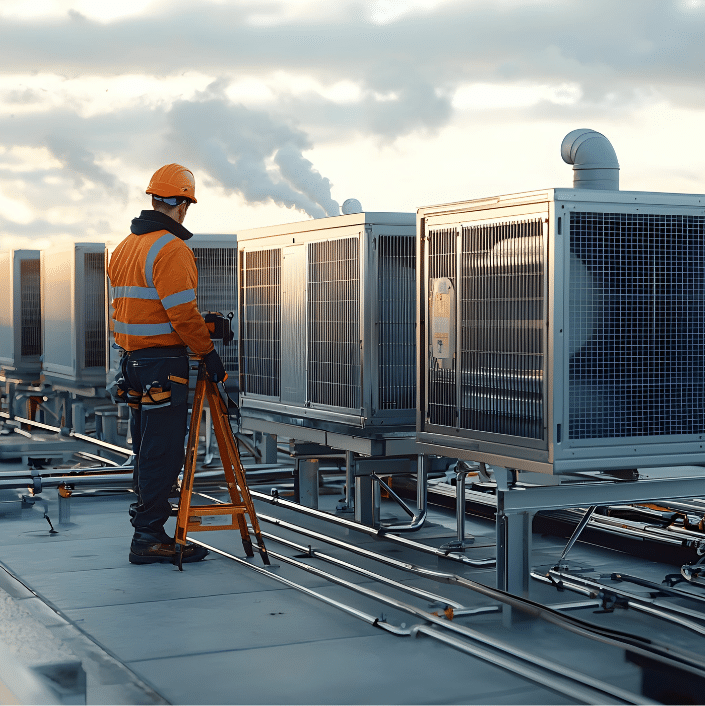

BLOG
HELPING SCHOOLS BREATHE BETTER
4/24/24
Students of all ages spend significant time (potentially one-quarter of each day) inside the classroom. Studies reveal a direct link between the quality of air students breathe in classrooms and their overall well-being, including their health, ability to focus, and, ultimately, their academic performance. Therefore, ensuring optimal indoor air quality (IAQ) creates a healthy and productive learning environment.
Understanding the Importance of IAQ in Schools
Common pollutants found in schools include mold, viruses, bacteria, volatile organic compounds (VOCs) from building maintenance materials such as paints and cleaning products, and particulate matter from furniture, carpets, chalk dust, and more. Exposure to these pollutants can provoke asthma attacks, allergies, respiratory illnesses, headaches, dizziness, and fatigue, hindering a student’s ability to concentrate and learn effectively.
The Importance of Proper HVAC Design, Adequate Ventilation, and Air Filtration in Schools
Compared to other non-residential buildings, HVAC systems in educational settings require designers and installers to consider unique factors, such as high occupancy rates, fluctuating student activity levels, and areas with specific ventilation requirements, such as science labs, woodworking shops, and kitchens. Older HVAC systems may be less efficient and struggle to meet the demands of modern schools. Upgrading to a newer HVAC system can significantly improve IAQ and provide long-term cost efficiencies.
Another important piece to ensuring optimal IAQ is classroom ventilation. The American Society of Heating, Refrigerating, and Air-Conditioning Engineers (ASHRAE) establishes school ventilation standards and classroom ventilation requirements. These standards specify the minimum amount of outdoor air delivered per occupant.
Maintaining adequate ventilation is crucial for achieving and sustaining good IAQ in schools. A team of qualified HVAC professionals can help ensure your school’s HVAC system meets current ASHRAE standards and local regulations. Here are some strategies for optimizing ventilation systems for schools:
Increase outdoor air intake: Maximize natural ventilation by opening windows whenever weather permits.
Schedule regular maintenance: Ensure proper maintenance of HVAC components, including filters and air ducts, to maintain optimal airflow.
Consider CO2 monitoring: Monitoring classroom carbon dioxide (CO2) levels can provide a real-time assessment of ventilation effectiveness. Increased CO2 levels indicate a need for increased ventilation.
Proper ventilation helps regulate classroom temperatures, manage humidity, and prevent mold growth.
Lastly, air filtration systems are critical in capturing airborne contaminants that escape ventilation systems. These systems enhance IAQ by removing pollutants like dust, allergens, bacteria, and even some viruses. Selecting the right filtration technology depends on the specific needs of the school. High-efficiency particulate air (HEPA) filters offer the most comprehensive filtration, while MERV (minimum efficiency reporting value) rated filters provide varying levels of particle capture. Regular air filter changes are necessary for optimal performance.
Improving IAQ in Schools Requires a Comprehensive Approach
A comprehensive strategy is required to create a truly healthy learning environment. Upgrading older, inefficient HVAC systems and installing an advanced air filtration system can maximize fresh air delivery and contaminant removal. Regularly maintaining these systems, including filter changes and duct cleaning, ensures optimal performance.
An indoor air quality monitor can be the eyes and ears of your school’s IAQ strategy. These devices measure key parameters like CO2, temperature, humidity, and particulate matter. By analyzing this data, school administrators can gain real-time insights into air quality fluctuations, allowing for proactive ventilation system adjustments or identifying areas requiring additional attention.
Integrating these monitors with HVAC controls can trigger automated responses, such as increased ventilation when CO2 levels rise, ensuring a consistently healthy learning environment.

Meeting Indoor Air Quality Standards and Regulations
While schools may not be required to meet federally mandated indoor air quality standards, the EPA offers valuable guidelines outlining recommended ventilation rates and best practices for maintaining healthy indoor air. However, many states have adopted or developed their own more specific regulations.
For many schools, assistance is often available through ESSER funding. This can allow schools to cover expenses required for equipment upgrades necessary to ensure optimal IAQ for their students, faculty and other employees.
Crete United’s network of local mechanical, electrical, plumbing (MEP), and building automation companies across the US can help schools evaluate their existing HVAC systems and determine the most cost-effective HVAC upgrade options.





